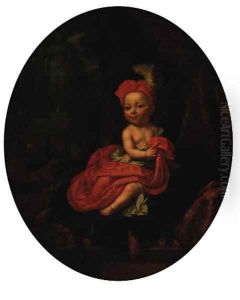Mathaeus Verheyden Paintings
Mathaeus Verheyden, born in 1700, was a distinguished Flemish painter whose contributions to the art world spanned the realms of portrait and religious painting. His life and work were deeply rooted in the artistic traditions of the Low Countries, a region known for its rich cultural heritage and significant contributions to the European art scene during the 17th and 18th centuries. Verheyden's oeuvre is a testament to the enduring appeal of Flemish art and its ability to adapt and evolve over time, reflecting the changing tastes and sensibilities of its patrons and audiences.
Verheyden's early life was characterized by rigorous training in the arts, a common practice among artists of his time. He was most likely apprenticed to a master painter, through which he would have learned the fundamental techniques and principles of painting, drawing, and possibly engraving. This period of apprenticeship was crucial for Verheyden, as it not only honed his technical skills but also immersed him in the artistic culture of the Flemish region, influencing his stylistic development and thematic preferences.
Throughout his career, Verheyden became known for his remarkable ability to capture the likeness and essence of his subjects. His portraits are characterized by a meticulous attention to detail and a subtle use of light and shadow, techniques that imbue his works with a sense of realism and psychological depth. This skill made him a sought-after portraitist among the nobility and the bourgeois, who desired to have their likenesses immortalized by his hand.
In addition to his portraits, Verheyden's religious works are notable for their devotional intensity and technical mastery. Drawing from biblical narratives and the lives of saints, these paintings reflect his deep engagement with the spiritual and moral themes of his time. They are characterized by dramatic compositions, a vivid color palette, and a profound sense of humanity, which resonate with viewers on an emotional and intellectual level.
Despite his success, details about Verheyden's personal life remain scarce, as is the case with many artists of his era. However, his legacy is preserved through his artworks, which continue to be studied and admired for their beauty and craftsmanship. Mathaeus Verheyden passed away in 1776, leaving behind a body of work that contributes to our understanding of Flemish art and its enduring influence on the European artistic tradition.
